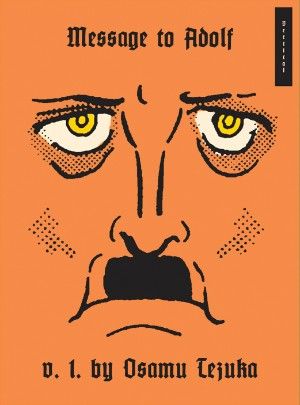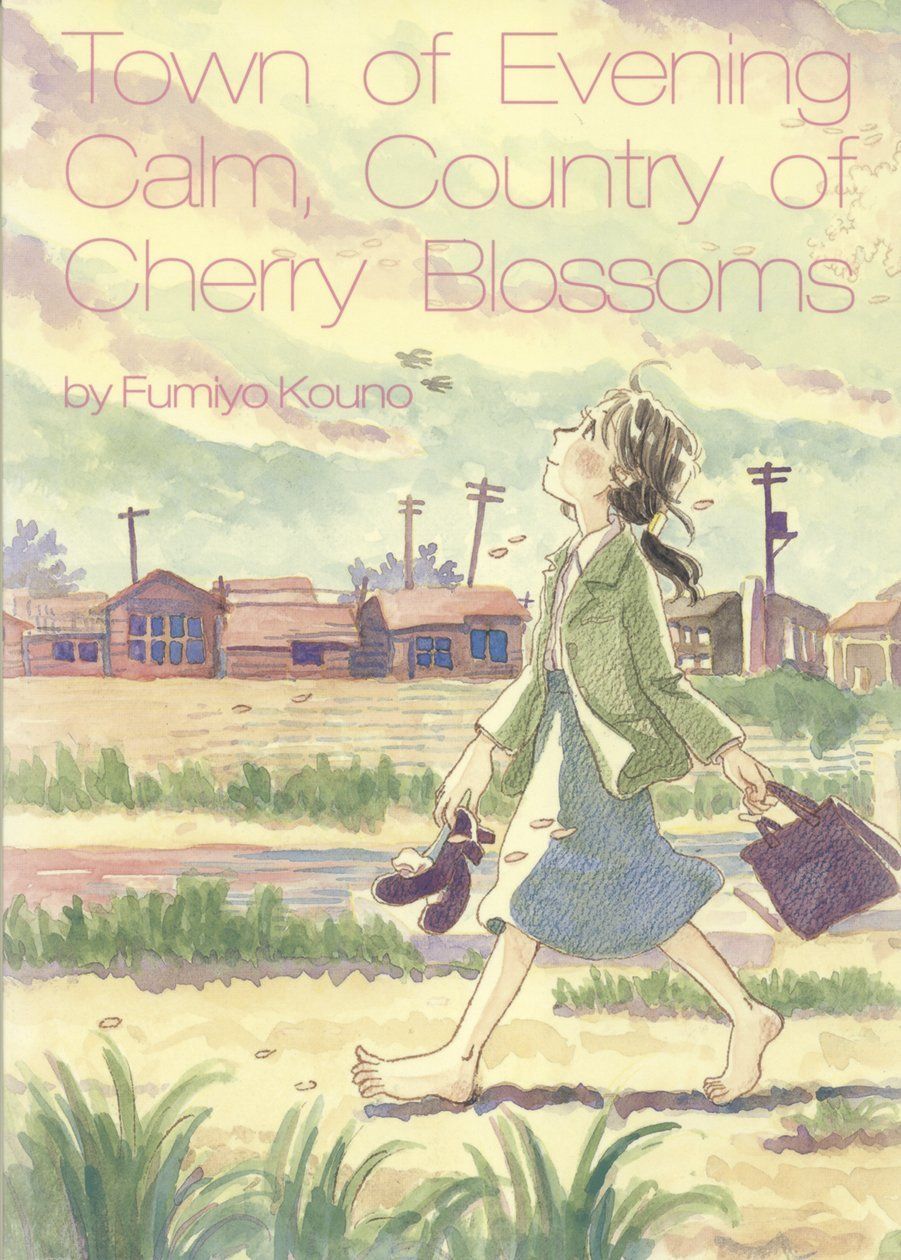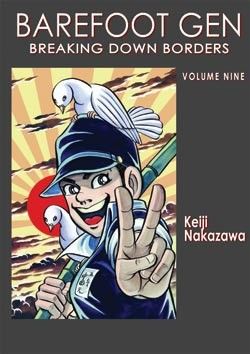World War II is the topic up for discussion this week, and there are many fine manga on this culturally touchy subject. We have very few available in English, one of which I've already talked about (Onward Towards Our Noble Deaths, by Shigeru Mizuki). The three here take three completely different narrative approaches. One is set during the bombing of Hiroshima and deals with the direct aftermath, another is a slice-of-life story about the consequences of the bombing in everyday life set sometime after, and the third is an Inglorious Basterds-style action story, and one of my all-time favorites.
Message to Adolf, aka Adolf - Osamu Tezuka (recently reprinted in 2 volumes, though a 5-volume version exists in English)
Few can tell a truly crazy action story like Osamu Tezuka, though admittedly, Adolf is somewhat more serious and less crazy than the likes of MW or Ode to Kirihito. The story starts with a reporter covering the Berlin Olympics. A murder takes place, and when the reporter begins investigating, it becomes clear the Nazis are covering something up. He is tortured and told to mind his own business, which only makes him more determined to get to the bottom of things. Elsewhere, we learn about two friends, a Jewish boy named Adolf, and a half Japanese/half German boy also named Adolf. The two grew up together, but the latter Adolf is shipped off to join the Hitler Youth, and his Nazi brainwashing conflicts with his knowledge that his Jewish friend is no different than anybody else. The story weaves through the lives of both Adolfs, the reporter and his mystery, and the war itself. I compared it to Inglorious Basterds, and while it's not as overtly violent as that movie, it's brutal in its own ways, and has its share of over-the-top action. Also, an alternate ending for Hitler, which may be hard to appreciate if you aren't familiar with Tezuka's "star system" (he uses the same characters in all his manga, but casts them in different "roles"). Its weakness may be that it keeps going after the end of WWII and drifts into PLO territory with the final confrontation between the two Adolfs. But before that, it's a tight little action/mystery story, and Tezuka does a great job of writing from several different viewpoints. This is also probably his most "realistic" artwork, which suits this story better than his usual, very cartoonish, style from Astro Boy or his early work. But it still might be a bit too exaggerated for some. Vertical just released it as a 2-volume omnibus with nice covers, and those should be widely available.
Town of Evening Calm, Country of Cherry Blossoms - Fumiyo Kouno (1 volume)
This is the only one of the three series I mention here set after World War II, and is also completely different in its mood and slice-of-life nature. There are two stories. The first, Town of Evening Calm, is set ten years after the bombing of Hiroshima. We see the everyday lives of the people living in the city after all the pieces had been picked up. The somewhat cheery moments are balanced with horrific reminders of the tragedy, such as the radiation scars visible on the women in the public bath house. The protagonist, a young woman, feels very guilty for having survived when so many others died. She shies away from relationships, since she feels she doesn't have the right to be happy. The story takes an unlooked-for and very tragic twist at the end, a narrative technique I'm always fond of when done right. Country of Cherry Blossoms is set in the present, and is more about the descendents of the survivors and the simple connections and relationships between a group of people, both young and old. The bombing doesn't enter the narrative directly, but it still hangs over the character's lives. It's a much cheerier story than the first, and I found it interesting that it could deal with the topic of the bombing with a lighter mood. Kouno's art is also very illustrative and meditative, and matches the moods of the stories perfectly. Sadly, though it was released in 2009, it looks like Last Gasp hasn't reprinted it recently, and online prices are being driven up. There's a digital edition available over at JManga.com that should be up for the forseeable future, though.
Barefoot Gen - Keiji Nakazawa (10 volumes)
An autobiographical work, but it re-tells the author's experiences without placing him as the main character directly. For the curious, the truly autobiographical Nakazawa work is "I Saw It!", which was released in English as a single-issue comic in the early 80s. Barefoot Gen, though, is one of the most depressing comics I've ever read, made worse by the fact it's true. But it's still good, and very powerful. Gen and his family are living in Hiroshima at the end of the war. Gen's older brothers are off serving the war effort, and Gen and his family live harsh lives. The worst by far is the famine, as all the food produced in Hiroshima is shipped away to feed soldiers. Gen and his family eat a small bowl of white rice on a good day, and often eat grass or go hungry on bad days. Because of his father's anti-war views, the field of wheat they had been growing was burned down, and Gen and his younger brother are frequently beat up (disturbingly, sometimes by their own father). The first volume is dedicated to just how terrible their lives are in Hiroshima. The second sees the bombing, and the terrible aftermath. Nakazawa uses images he experienced himself, which include people walking around dragging their skin behind them, others who are completely covered in tiny shards of glass embedded in their bodies, and horses that are running around on fire and melting. Though Nakazawa uses a fairly flat and cartoony style, these are things that I will never unsee. Gen has to run through town to help his family, avoiding desperate pleas for help the entire way, and still can't save them once he gets there. Incredibly, this story ran in the magazine Shounen Jump, and was written for 10-14 year old children. I've never been able to pick up volume three myself, as volume two still haunts me several years after having first read it. It's worth reading, though. I always think of it as the flip-side to Maus, and it might be a good (if horriffic) follow-up to that for a first-time reader. Last Gasp generally keeps this series in print, though it looks like 2-3 random volumes are currently missing on Amazon. The first two are still available though, and those are the ones you want.




